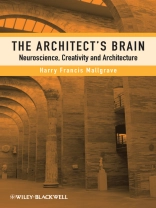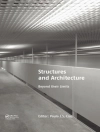The Architect’s Brain: Neuroscience, Creativity, and Architecture is the first book to consider the relationship between the neurosciences and architecture, offering a compelling and provocative study in the field of architectural theory.
* Explores various moments of architectural thought over the last 500 years as a cognitive manifestation of philosophical, psychological, and physiological theory
* Looks at architectural thought through the lens of the remarkable insights of contemporary neuroscience, particularly as they have advanced within the last decade
* Demonstrates the neurological justification for some very timeless architectural ideas, from the multisensory nature of the architectural experience to the essential relationship of ambiguity and metaphor to creative thinking
Mục lục
Introduction
Part One: Historical Essays
1. The Humanist Brain (Alberti, Vitruvius, and Leonardo).
2. The Enlightened Brain (Perrault, Laugier, and Le Roy).
3. The Sensational Brain (Burke, Price, and Knight).
4. The Transcendental Brain (Kant and Schopenhauer).
5. The Animate Brain (Schinkel, Bötticher, and Semper).
6. The Empathetic Brain (Vischer, Wölfflin, and Göller).
7. The Gestalt Brain (The Dynamics of the Sensory Field).
8. The Neurological Brain (Hayek, Hebb, and Neutra).
9. The Phenomenal Brain (Merleau-Ponty, Rasmussen, and Pallasmaa).
Part Two: Neuroscience and Architecture.
10. Anatomy: Architecture of the Brain.
11. Ambiguity: Architecture of Vision.
12. Metaphor: Architecture of Embodiment.
13. Hapticity: Architecture of the Senses.
14. Epilogue: The Architect’s Brain.
Endnotes.
Bibliography.
Index.
Giới thiệu về tác giả
Harry Francis Mallgrave is a professor of architecture
at Illinois Institute of Technology, and has enjoyed a
distinguished career as an award-winning scholar, translator, and
architect. His most recent publications include Modern
Architectural Theory: A Historical Survey, 1673-1968, and the
two-volume Architectural Theory: An Anthology from Vitruvius to
2005 (Wiley-Blackwell 2008). His forthcoming
Introduction to Architectual Theory will be published by
Wiley-Blackwell in 2010.












